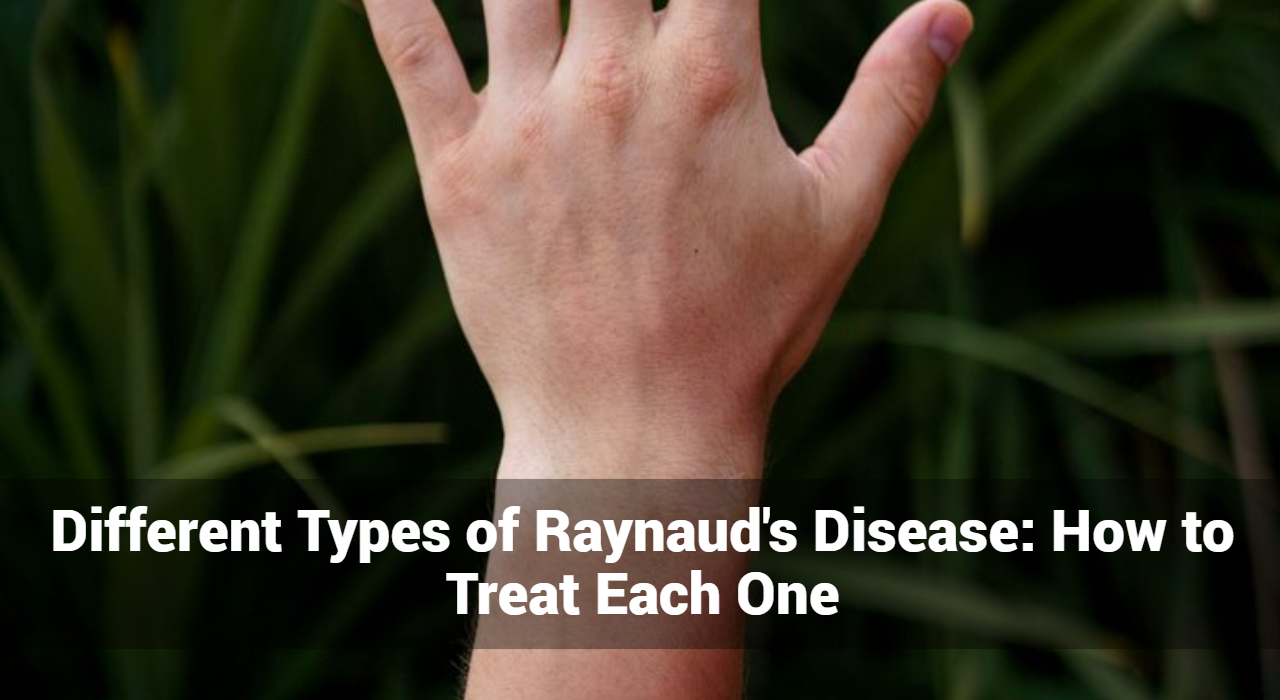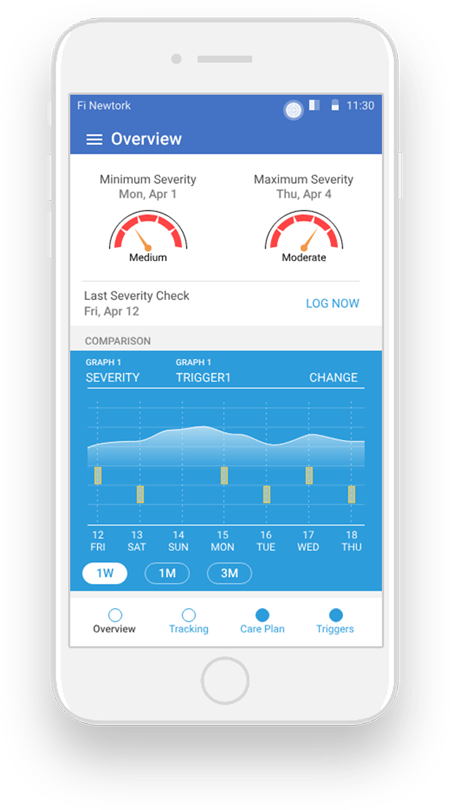Different Types of Raynaud’s Disease: How to Treat Each One

Raynaud’s Disease, also known as Raynaud phenomenon or Raynaud’s syndrome, is a condition characterized by episodes of vasospasm, which causes reduced blood flow to certain areas of the body, typically the fingers and toes. These episodes can lead to color changes, numbness, and pain in the affected areas. Raynaud’s disease can be primary or secondary, each with distinct causes and treatment approaches. This article provides an in-depth look at the different types of Raynaud disease and how to treat each one effectively.
Different Types of Raynaud Disease
1. Primary Raynaud’s Disease
Primary Raynaud’s disease (also called Raynaud’s phenomenon) is the more common and less severe form. It occurs without any associated medical condition and is often less severe. It primarily affects young women and typically begins between the ages of 15 and 30.
Causes
- Idiopathic: The exact cause is unknown.
- Genetic Predisposition: There may be a hereditary component.
Symptoms
- Color Changes: Fingers or toes turn white (blanching) or blue in response to cold or stress.
- Numbness and Tingling: Reduced blood flow causes numbness and a prickly feeling.
- Pain: Throbbing pain may occur as blood flow returns.
2. Secondary Raynaud’s Disease
Secondary Raynaud’s disease (also known as Raynaud’s syndrome) is less common but more severe. It is associated with other underlying conditions and usually affects older individuals.
Causes
- Connective Tissue Diseases: Such as scleroderma, lupus, and rheumatoid arthritis.
- Arterial Diseases: Atherosclerosis and Buerger’s disease.
- Occupational Causes: Jobs involving vibrating tools or repetitive motions.
- Medications: Some beta-blockers, chemotherapy agents, and migraine medications.
- Injuries: Hand or foot injuries.
Symptoms
- More Severe Episodes: Longer duration and more frequent episodes compared to primary Raynaud disease.
- Ulcers and Infections: Due to prolonged lack of blood flow, ulcers or sores can develop.
- Associated Symptoms: Symptoms of the underlying condition, such as joint pain or skin changes.
Track and Manage your Eczema treatment using a comprehensive Eczema App
Download Eczemaless now
General Treatment Approaches Management for Both Raynaud’s Disease Types
01. Lifestyle Modifications
- Avoid Cold Exposure: Keep the entire body warm, especially hands and feet. Wear gloves, warm socks, and use hand warmers in cold weather.
- Reduce Stress: Practice relaxation techniques such as yoga, meditation, or deep breathing exercises.
- Avoid Smoking: Smoking can constrict blood vessels and worsen symptoms.
02. Diet and Supplements
- Healthy Diet: A balanced diet rich in fruits, vegetables, whole grains, and lean proteins supports overall vascular health.
- Omega-3 Fatty Acids: Found in fish oil, flaxseed oil, and walnuts, omega-3s can improve blood flow.
- Ginkgo Biloba: This supplement may improve circulation.
What Are The Treatments for Primary Raynaud’s Disease?
01. Medications
- Calcium Channel Blockers: Such as nifedipine and amlodipine, can help dilate blood vessels and reduce the frequency and severity of attacks.
- Vasodilators: Drugs like nitroglycerin ointment can be applied to affected areas to widen blood vessels.
02. Behavioral Therapy
- Biofeedback: This technique teaches control over body functions, such as blood flow, to help manage symptoms.
- Cognitive Behavioral Therapy (CBT): Can help manage stress, which is a common trigger.
What Are The Treatments for Secondary Raynaud’s Disease?
01. Medications
- Calcium Channel Blockers and Vasodilators: Similar to primary Raynaud disease, these can be effective.
- ACE Inhibitors: Such as enalapril, can help reduce the frequency of attacks.
- Prostaglandins: Intravenous prostaglandins like iloprost can help in severe cases by dilating blood vessels.
02. Treatment of Underlying Conditions
- Connective Tissue Disease Management: Medications like immunosuppressants, corticosteroids, or antimalarial drugs to control the primary disease.
- Addressing Arterial Conditions: Treatments such as angioplasty for atherosclerosis.
03. Surgical Options
- Sympathectomy: A surgical procedure to cut the nerves that cause blood vessel constriction. This is considered when symptoms are severe and not responsive to other treatments.
- Botox Injections: Botulinum toxin injections can block nerves that constrict blood vessels, relieving severe symptoms.
04. Advanced Therapies
- Phosphodiesterase Inhibitors: Drugs like sildenafil (Viagra) can improve blood flow.
- Endothelin Receptor Antagonists: Such as bosentan, can be used in severe cases, particularly when associated with scleroderma.
GET IN CONTROL OF YOUR ECZEMA
Use our AI tool to check the severity of Eczema and keep track of your Eczema progress.
How to Help Prevent Raynaud’s Attacks?
Raynaud’s disease, characterized by episodes of reduced blood flow to the fingers and toes, can be both uncomfortable and disruptive. Prevention strategies focus on reducing triggers, enhancing blood flow, and maintaining overall vascular health. Here are effective methods to help prevent Raynaud’s attacks:
1. Lifestyle Modifications
Stay Warm
- Dress Appropriately: Wear warm clothing, especially gloves, socks, and hats, in cold weather. Layer your clothing to trap body heat.
- Use Warm Packs: Carry hand and foot warmers during cold weather or stressful situations.
- Warm Environment: Keep your home and workplace warm. Use space heaters if necessary.
Manage Stress
- Relaxation Techniques: Practice stress-reducing activities like yoga, meditation, or deep-breathing exercises.
- Regular Exercise: Physical activity can improve circulation and reduce stress. Aim for at least 30 minutes of moderate exercise most days of the week.
- Avoid Stressful Situations: Identify and manage situations that trigger stress. Consider professional counseling or stress management programs if needed.
2. Dietary Adjustments
Healthy Diet
- Balanced Nutrition: Consume a diet rich in fruits, vegetables, whole grains, lean proteins, and healthy fats to support vascular health.
- Omega-3 Fatty Acids: Include foods high in omega-3s, such as fatty fish (salmon, mackerel), flaxseeds, and walnuts. These can improve blood flow and reduce inflammation.
Hydration
- Drink Plenty of Water: Staying hydrated is essential for maintaining good circulation. Aim for at least 8 glasses of water a day.
3. Avoiding Triggers
Cold Exposure
- Limit Time Outside: Stay indoors during extreme cold weather.
- Pre-warm Your Car: Start your car and let it warm up before driving in cold weather.
- Warm Water: Wash hands and bathe with warm water instead of cold.
Vibrating Tools and Repetitive Movements
- Protect Your Hands: Use protective gear if you must use vibrating tools or perform repetitive tasks.
- Take Breaks: Regularly rest your hands during activities involving repetitive motions.
4. Smoking and Alcohol
Quit Smoking
- Nicotine Effects: Nicotine constricts blood vessels and can trigger Raynaud’s attacks. Seek support to quit smoking through counseling, nicotine replacement therapies, or prescription medications.
Limit Alcohol Consumption
- Moderation: Alcohol can affect blood circulation. Drink in moderation, if at all, and be aware of its impact on your symptoms.
5. Medications and Supplements
Consult Your Doctor
- Review Medications: Some medications, such as beta-blockers and certain migraine drugs, can worsen Raynaud’s. Discuss alternatives with your healthcare provider.
- Supplements: Consider supplements like ginkgo biloba or fish oil, which may improve circulation. Always consult with a healthcare professional before starting any new supplements.
6. Hands and Feet Care
Moisturize Regularly
- Prevent Dryness: Use lotions and creams to keep your skin hydrated and prevent cracking, which can worsen symptoms.
Massage
- Enhance Circulation: Gentle hand and foot massages can stimulate blood flow.
7. Regular Medical Checkups
Monitor Your Health
- Regular Visits: Keep up with regular checkups to monitor your condition and adjust treatments as necessary.
- Early Intervention: Address any new or worsening symptoms promptly with your healthcare provider.
Conclusion
Raynaud’s disease, whether primary or secondary, can significantly impact the quality of life. Understanding the differences between the two types is crucial for effective management. Primary Raynaud disease generally responds well to lifestyle modifications and medications, while secondary Raynaud disease often requires a more aggressive approach, including treatment of underlying conditions and possibly surgical interventions. If you suspect you have Raynaud disease, it is important to consult with a healthcare provider to receive a proper diagnosis and tailored treatment plan. With appropriate management, individuals with Raynaud’s disease can lead a comfortable and active life.
Track and Manage your Eczema treatment using a comprehensive Eczema App
Download Eczemaless now



Use our AI tool to check the severity of Eczema and keep track of your Eczema progress
Recent Posts
- What Are Cherry Angiomas? It’s Causes, Symptoms & How To Treat
- Adult Acne: Types, Causes, Symptoms, Treatment & Prevention
- How to Relieve Winter Itch: Causes, Symptoms, and Treatment
- What Is Kaposi Sarcoma? It’s Symptoms, Causes & Treatment
- What Is Erythrasma: It’s Symptoms, Causes, And How To Treat


